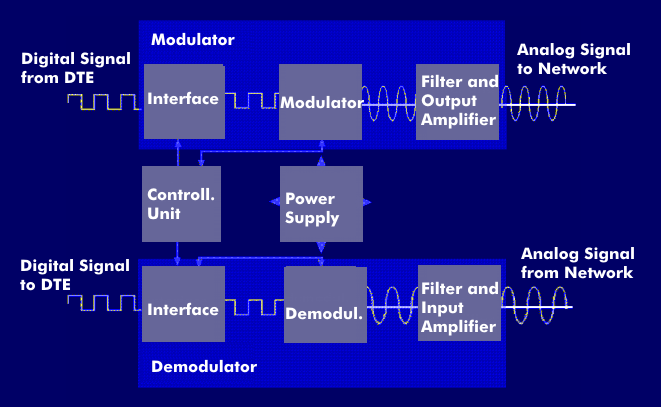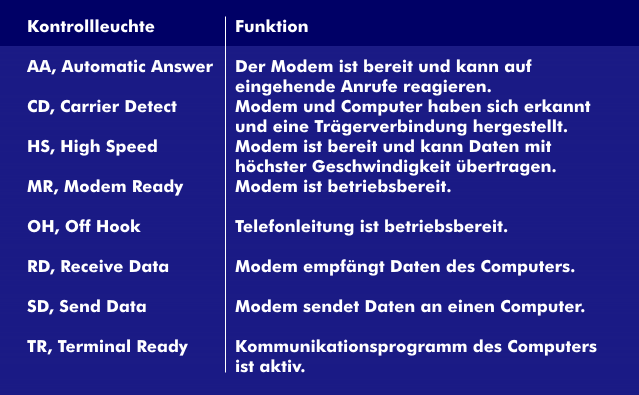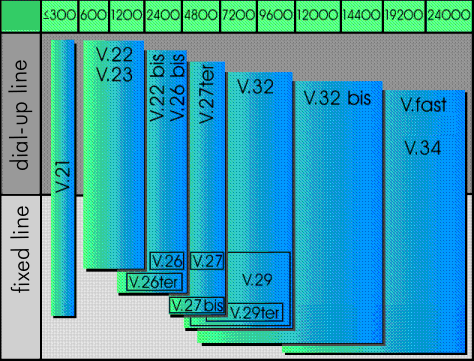modulator/demodulator (Modem)
The modem, an artificial word made up of the terms modulator and demodulator, converts digital signals from the data terminals into analog audio signals so that they can be transmitted via the existing analog networks, such as the telephone network. On the transmitter side, the modem converts the digital signals into analog audio frequencies and, on the receiver side, ensures that the audio frequencies are converted back into digital signals.
Different modems are used for the various transmission paths: ITU modems for transmission in public networks, baseband modems for private lines, optical modems for fiber optic and infrared links, RF modems for coaxial cables, modems for cellular mobile radio networks, fax modems for fax transmissions, PLC modems for powerline, and radio modems for wireless links and for microwave and satellite links.
Modulation method of modems
The modem works with optimized modulation procedures in order to be able to use the limited bandwidth of the network for the highest possible transmission speeds. The modulation methods used include amplitudeshift keying, frequencyshift keying, phase shift keying, and compression methods.
In addition to signal conversion, the modem takes care of transmitting, Send Data( SD), and receiving, Receive Data( RxD), signals, it provides interface control and line monitoring, Carrier Detect( CD). Classic telephone modems indicate the control commands by indicator lights. There are functions with which modems automatically answer a request, the Automatic Answering( AA), or with which they determine the data rate of the opposite side, in which they sample the first transmitted character and derive the transmission speed from it. This function is called Automatic Baud Rate Detection( ABRD). With another function, Adaptive Power Control( APC), modems determine the line characteristics and then tune the transmission parameters and methods. This tuning is done according to V.22bis with bit rate adaptation. Modems with this function try to find the maximum bit rate when establishing a connection and also during data transmission. They constantly monitor the line quality and adapt to the current line conditions.
Modem transmission methods
The International Telecommunication Union (ITU) has defined the transmission procedures for modems in the ITU-T standards, V recommendations. According to these, modems can receive 56 kbit/s in accordance with V .90 and transmit up to 33.6 kbit/s in accordance with V. 34; in conjunction with V.92, they can even transmit 48 kbit/s. The maximum bit rate is dependent on the fixed and dial-up connections. The maximum bit rate depends on the line quality and does not always have to be achieved. To increase the data throughput, online data compression is often used in modems. Two methods, the Microcom Networking Protocols( MNP) and V.42bis, have become established. ITU defined V.42bis as a data compression standard that allows bit rate increases of up to 400%.
For control, modems use AT commands.



